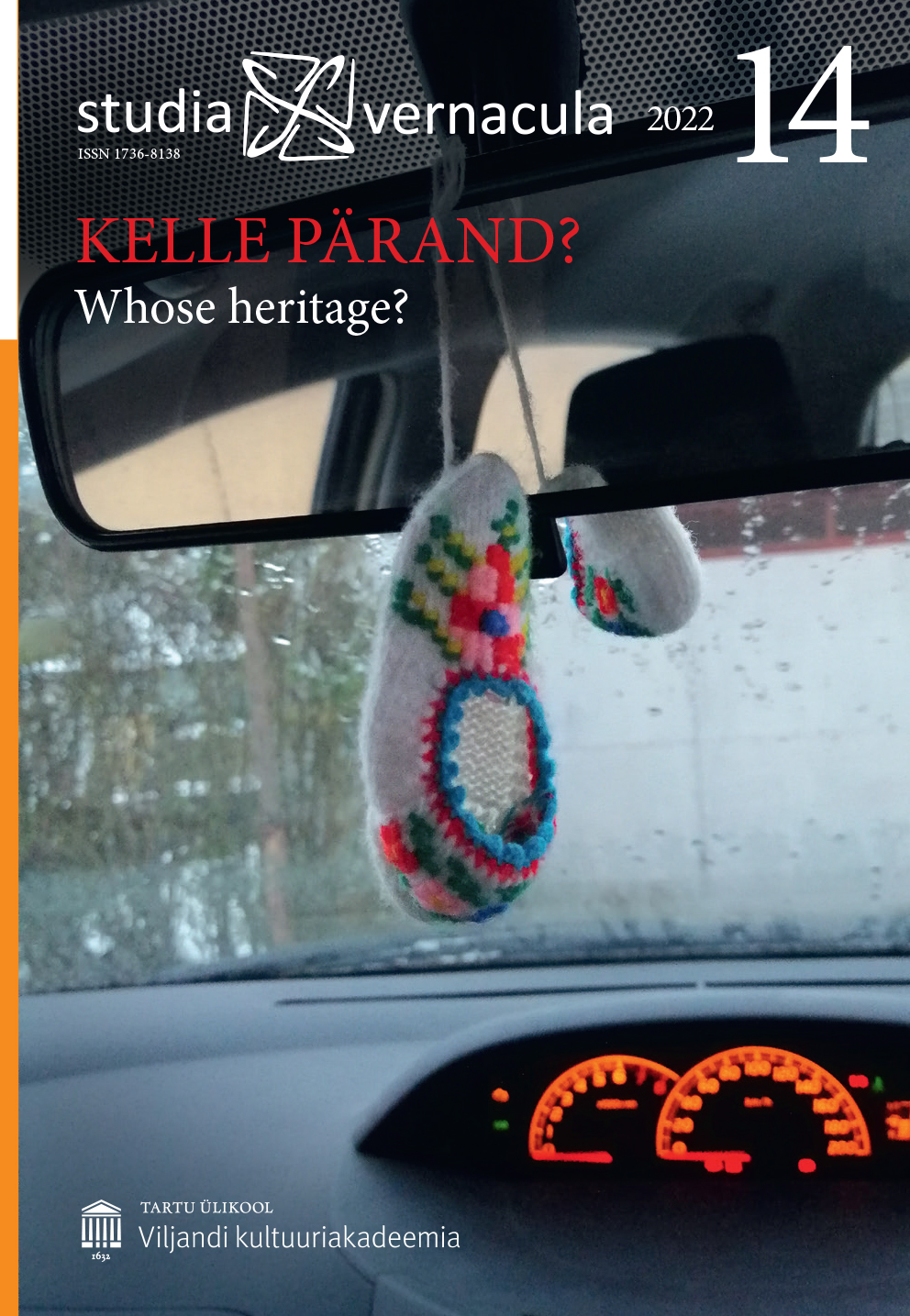Linukaid võib kanda mitut moodi: ei ole õiget ega valet kandmisviisi / Linukas, traditional tailed coif, can be worn in many ways
DOI:
https://doi.org/10.12697/sv.2022.14.126-149Abstract
Headwear is an integral part of any traditional set of women’s clothing. It varies a lot according to the region, age and social status of the wearer. In the present article, we focus on linukas or tailed coif: Estonian women’s traditional festive headwear (see photo 5) that was worn in Central and Northern Estonia in the 18th century (see the distribution map in drawing 3). During the first half of the 19th century, their use in everyday wear became more scarce and they were used mostly as bridal headwear. By the middle of the 19th century, they had disappeared from wider use. Tailed coifs were expensive garments that only the wealthiest peasants could afford, and were worn especially on festive occasions.
The term linukas derives from the word lina, i.e linen. Originally it could denote a sheet of cloth that was tied around the head in the manner of a Mulgi woman’s headwear. A tailed coif (see drawing 2) consists of a decorated linen tail hanging on the wearer’s back and of a chaplet (pärg). When linukas was worn, hair was left loose, as it is depicted in the drawings and in the descriptions of the 18th century Estonian peasants. Some items have embroidered forehead bands that indicate the possibility of wearing the sheet without a chaplet. Linukas was made of fine linen or cotton; the tails were decorated with embroidery that used either white linen thread or black or coloured silk thread as the material. In addition to embroidered embellishments, metallic galloon trimmings and fringes could be attached to the items.
Tailed coifs spread mainly in Järva, Northern Viljandi, Viru and Eastern Harju counties. These regions are known for good soils that sustain agriculture. Põltsamaa, a major town of the region, was historically known as an important crafts centre that drew skilled masters of German origin.
Based on the composition of the embroidery on its hanging ends and how the tail was stitched together, two main types can be distinguished. The first group of tailed coifs, the items worn in the vicinity of Põltsamaa, have a twopart pattern, parted by the seam that is covered with metallic galloon trimming. Lower edges of the tail also have trimming and fringes. The second group includes coifs with a pattern covering the tail as a single composition and the seam is either on the side or underneath the tail. This type of tailed coif does not have fringes, but may have trimmings of galloon or lace. The main area of distribution of this type of coif is Järvamaa.
Traditionally, folk costume has been described in terms of ethnography and art history. Less attention has been paid to the geographical distribution of certain items and the ways of wearing them. During recent decades, the study of traditional folk costume has become more technology-orientated and practice-based in Estonia. In our research, we mainly looked for the wear marks that can indicate how the pieces were tied onto the head.
Currently, only one way of wearing tailed coifs prevails: it is customary to tie all the coifs and chaplets under the tail. In order to find out how these items were worn in the past, we examined 40 museum objects that could be identified as linukas or as some other item containing details from repurposed tailed coifs. The studied items belong to the collections of the Estonian National Museum, Järvamaa Museum and Estonian History Museum. Folds, traces of stitches, loose threads, stains, greasy areas and the length of the forehead bands, all convey important relevant information about the wearing patterns of the tailed coifs. Historical drawings and descriptions were also scrutinised. As a result, it was possible to distinguish six different ways of wearing a tailed coif:
● Coif and chaplet are worn together; the tail of the coif is on top of the chaplet (drawing 4).
● Coif and chaplet are worn together; the tail of the coif is underneath the chaplet (drawing 6).
● Coif is worn without a chaplet; forehead band is tied underneath the tail (drawing 8).
● Coif is worn without a chaplet; the ends of the forehead band are tied on top of the tail (drawing 10).
● The ends of the forehead band are tied underneath the chin (drawing 11).
● Coif and chaplet are worn together, chaplet is placed on top of the forehead band and the top of the head remains uncovered (drawing 12).
Thence, our research indicates that there are several ways of wearing a tailed coif, not simply one indisputable one. Diversifying the tailed coif wearing styles helps to enrich our traditional looks.
Keywords: headwear, folk costume, tailed coif, garments

